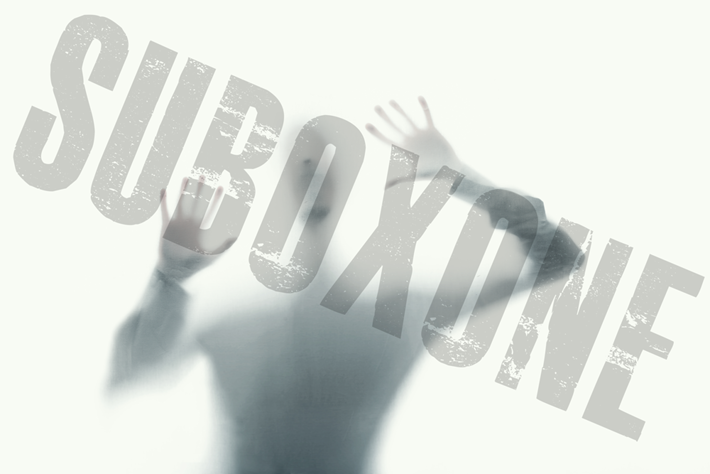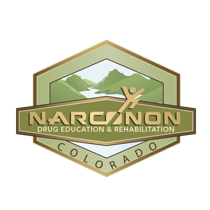Suboxone: A Chemical Prison

Suboxone is often promoted as being the “safe” alternative to opioid and heroin addiction. While it is true that the number of Suboxone overdoses is lower than that of opioids like heroin and Oxycontin; this does not mean that the drug is completely safe. Suboxone contains Naloxone (an opioid antagonist used to reverse the effects of opioid medication and overdose) as well as Buprenorphine which is a partial opioid agonist that gives Suboxone its addictive and abuse worthy properties.
Those that advocate the widespread use, as well as the effectiveness of Suboxone, will argue that it is a safe alternative because there are fewer overdoses from Suboxone than there are from heroin and other narcotic painkillers. Another argument is that it has the potential to help a person stay off of heroin. These are both true statements. What is also true is that there are millions of more people currently on heroin and prescription strength painkillers (both illicit and prescribed) than there are on Suboxone. The fact that the amount of documented Suboxone overdoses is lower than those due to heroin or pain pills does not negate the fact that Suboxone has the potential for abuse and overdose.
According to the National Alliance of Advocates for Buprenorphine Treatment, Buprenorphine is considered to be a safe alternative due to it having: “less euphoria and physical dependence, lower potential for misuse, a ceiling on opioid effects and relatively mild withdrawal profile.”
I am not here to say that Suboxone is “the devil.” It has helped several people to quit using heroin and pain killers; what I am saying is that there are also very negative side effects from the long term use of Suboxone that are often overlooked.

Common side effects listed on the official Suboxone website include: “nausea, vomiting, drug withdrawal syndrome, headache, sweating, numb mouth, constipation, painful tongue, redness of the mouth, intoxication (feeling lightheaded or drunk), disturbance in attention, irregular heartbeat, decrease in sleep, blurred vision, back pain, fainting, dizziness, and sleepiness.” The Suboxone site also advises the following: “Do not stop taking SUBOXONE Film suddenly without talking to your healthcare provider. You could become sick with uncomfortable withdrawal symptoms because your body has become used to this medicine.”
Having worked in a Detox/Withdrawal unit myself, I have seen and worked with hundreds of people coming off of various forms of drugs including but not limited to: heroin, pain pills, Suboxone and Methadone. While all of these withdrawals can be extremely difficult and at times very painful, the withdrawal experiences that I have witnessed from long term Suboxone and Methadone use have by far been worse and longer lasting than the withdrawals experienced by those coming off of heroin and pain pills. I have often heard people coming off of Suboxone say
“I wish I was just kicking heroin, at least it would be over faster.”
A big reason why the withdrawal process from long term Suboxone use lasts so much longer than heroin withdrawal (which is ironically one of the very drugs it’s meant to treat) is due to its longer half-life (24-60 hours).
When used as a short term taper Suboxone has been proven to be a very effective way of helping people get through their opiate withdrawals with less discomfort in order to achieve the ultimate goal of getting off of drugs altogether. However, when used long term Suboxone has withdrawal symptoms that last in many cases twice as long as the withdrawal symptoms associated with heroin use. There are individuals who are able to responsibly use Medicated Assisted Therapy (MAT) to get off of heroin and pain pills, but in the end, long term Suboxone use is still replacing one highly addictive substance for another highly addictive substance.
The long term use of Suboxone may help someone to stay off of heroin however it still keeps the person physically and mentally dependant on an opioid based substance. Additionally, it will not prevent the individual from using other highly addictive substances such as cocaine, benzodiazepines, alcohol or methamphetamine. The use of benzodiazepines and/or alcohol combined with the use of Suboxone is considered dangerous due to the higher likelihood of overdose and/or death. Official Suboxone safety information states the following:

“SUBOXONE Film can cause serious life-threatening breathing problems, overdose, and death, particularly when taken by the intravenous (IV) route in combination with benzodiazepines or other medications that act on the nervous system (I.e., sedatives, tranquilizers, or alcohol).”
When taken in high enough amounts Suboxone can produce an opioid like high similar to other opioids and the Suboxone website even states under its safety information that “SUBOXONE Film can be abused in a manner similar to other opioids, legal or illicit.” Many cities have seen a rise in illegal Suboxone sales and abuse for the sole purpose of getting high on Suboxone and Suboxone alone. It is also one of the most commonly abused substances in correctional facilities due to the relative ease of sneaking in the thin sublingual strips. On the streets, Suboxone has become highly coveted; it is often traded for other drugs and sold by drug dealers.
So yes, Suboxone may have some legitimate medical uses but it is certainly not all sunshine and rainbows when it comes to this “miracle drug.” Let us not forget that Oxycontin was once advertised as the “non-addictive” miracle drug to those with chronic pain. It’s almost hard to believe after the thousands of deaths associated with Oxycontin that it was ever called non-addictive but it was. My guess is that as the years go on our society may look back and wonder how we ever convinced ourselves that Suboxone was the cure-all to opiate addiction.
At the end of the day what it comes down to is that once a person becomes physically dependent on a chemical substance whether it be illicit or prescribed, they are addicted. If the person begins to experience withdrawal symptoms from suddenly stopping a substance they are physically dependent on and addicted to that substance. When a person takes Suboxone to handle their addiction without addressing the underlying root causes of their initial addiction, they are still caught up in addiction. When a person trades one addiction and becomes physically dependent on another addictive prescription they have become trapped by the highly lucrative chemical prison that “Big Pharma” has lured so many people into.
If you or a loved one is interested in abstinence based recovery and becoming completely free from all forms of chemical dependency give us a call today.
Resources:
- Official Suboxone Website
- Official Suboxone Safety Information
- The National Alliance of Advocates for Buprenorphine Treatment
- The New York Times


